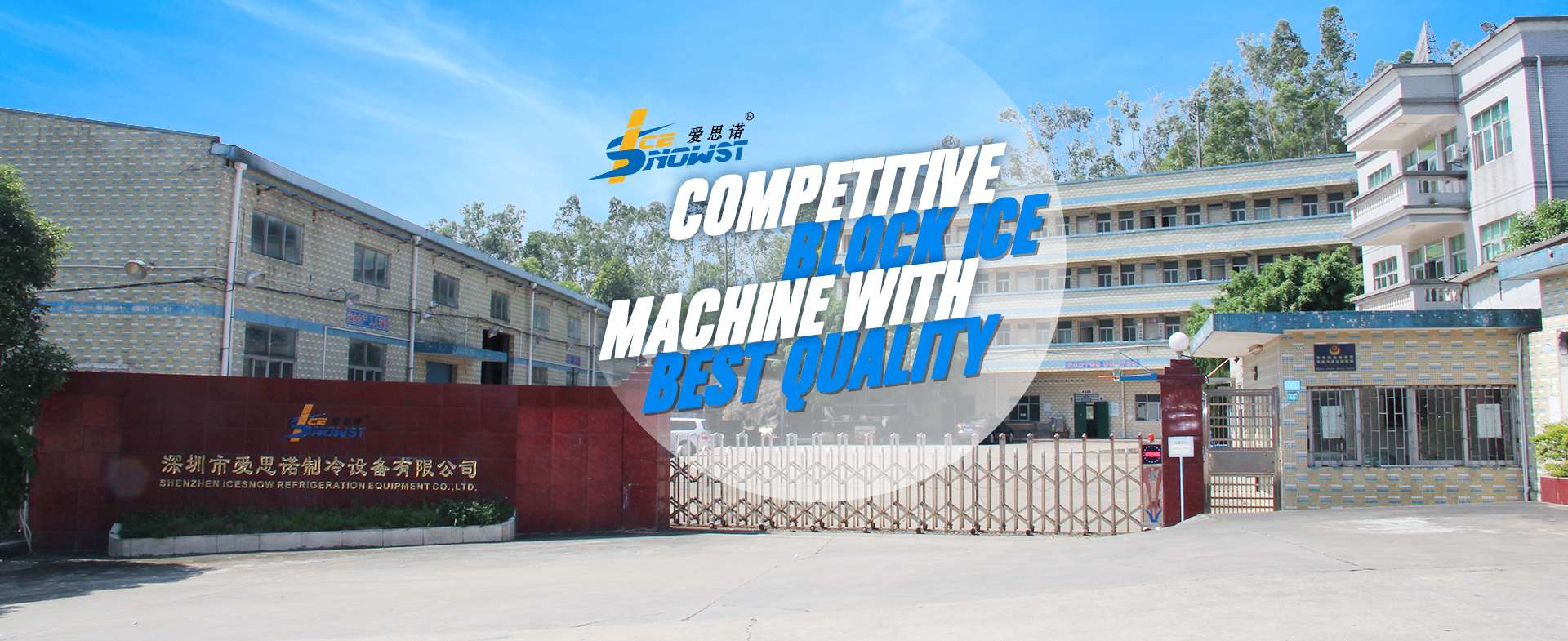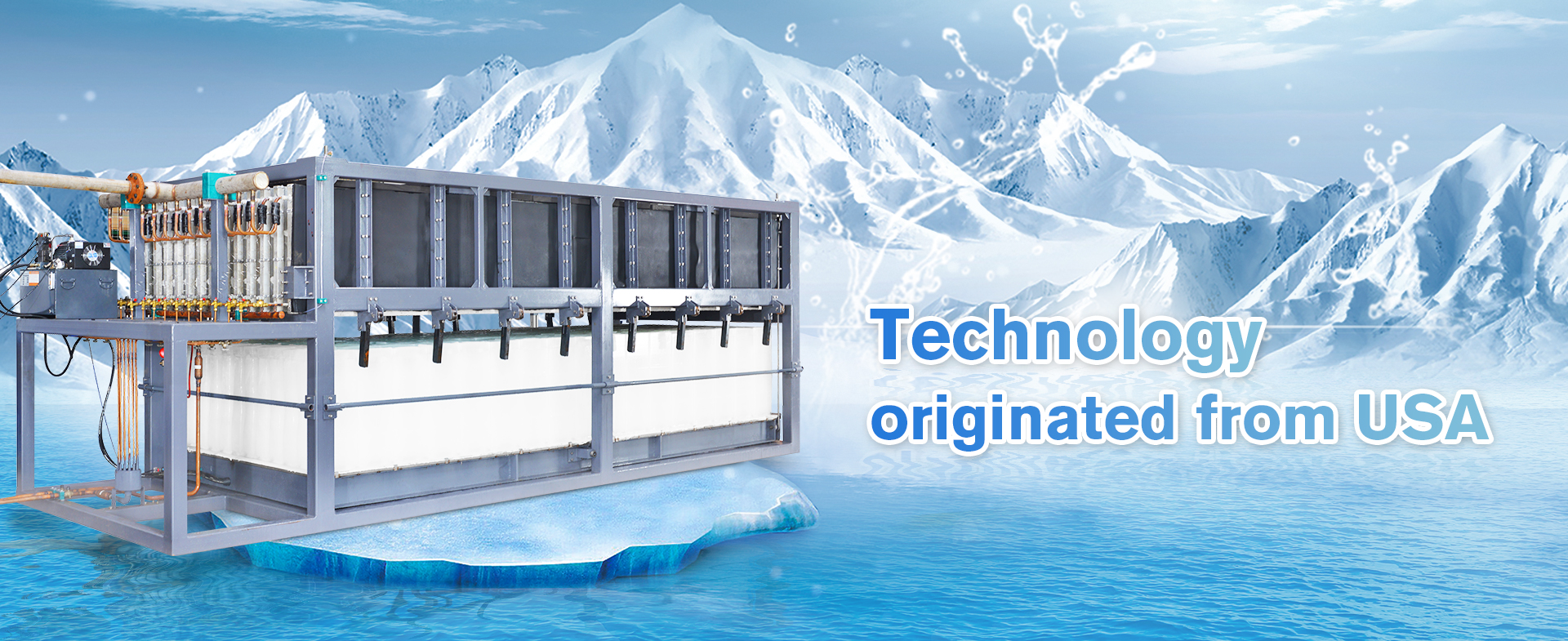
Exploring the Future of Sustainable Cooling: The Rise of Sea Water Ice Machines
Table of Contents
- Understanding Sea Water Ice Machines and Their Mechanisms
- Identifying the Environmental Benefits of Sustainable Cooling Solutions
- Comparing Sea Water Ice Machines with Traditional Cooling Methods
- Implementation Challenges of Sea Water Ice Technology in Urban Areas
- Future Innovations and Trends in Sustainable Cooling Technologies
- FAQS
- Conclusion
- Related Posts
In recent years, the increasing demand for sustainable cooling solutions has prompted a shift towards innovative technologies, among which Sea Water Ice Machines are gaining significant attention. These machines harness the potential of seawater to produce ice, providing an environmentally friendly alternative to traditional cooling methods. Guangdong Icesnow Refrigeration Equipment Co., Ltd., established in 2003, plays a pivotal role in this revolution, specializing in the research, design, manufacture, and sale of various ice-making equipment, including flake ice machines and tube ice machines. With a commitment to sustainability, Icesnow is at the forefront of integrating sea water ice technology into their product offerings, aiming to address the pressing challenges of energy consumption and environmental impact in the refrigeration industry. As the trend towards sustainable cooling continues to rise, the development and implementation of Sea Water Ice Machines stand out as a promising area for future exploration and innovation.

Understanding Sea Water Ice Machines and Their Mechanisms
Sea water ice machines are innovative systems designed to harness the cold temperature of sea water for refrigeration and cooling purposes. These machines operate using the principle of heat exchange, where warm air is passed over coils containing ice made from seawater. As the air cools, it lowers the temperature of the surrounding environment while simultaneously melting the ice, which is then recirculated through the system. This process not only provides effective cooling but also minimizes energy consumption compared to traditional refrigerants.
The mechanisms behind sea water ice machines involve a unique combination of engineering and natural resource utilization. The machines typically include a seawater intake system that draws in cold water, which is crucial for maintaining optimal ice production. The ice is created through a freezing process on panels or tubes, where seawater is cooled and frozen. This method offers an eco-friendly alternative to conventional cooling systems, leveraging abundant natural resources while significantly reducing greenhouse gas emissions.
Overall, sea water ice machines represent a promising advancement in sustainable cooling technology, offering efficient solutions to meet rising cooling demands.
Identifying the Environmental Benefits of Sustainable Cooling Solutions
The cooling industry is witnessing a transformative shift towards sustainable solutions, particularly with the emergence of sea water ice machines. These innovative systems harness the natural cold of seawater to produce ice, which can then be utilized for cooling purposes. This method not only significantly reduces the energy consumption associated with traditional cooling systems but also minimizes the environmental footprint, aligning with global sustainability goals.
According to recent industry forecasts, the global chiller market is projected to grow from $9.92 billion in 2025 to $12.33 billion by 2033, with a compound annual growth rate (CAGR) of 5.59%. Similarly, the rolling chiller segment is expected to see a substantial increase from $3.43 billion in 2025 to approximately $5.78 billion by 2034, with an impressive CAGR of 5.98% during the same period. These figures highlight the increasing demand for energy-efficient cooling solutions as businesses and industries prioritize sustainable practices in their operations.
Moreover, as sustainability gains momentum, technologies like immersion cooling for data centers are being recognized as viable alternatives to traditional cooling methods. This shift not only addresses energy efficiency challenges but also supports corporate responsibility initiatives. With advancements in technology and a focus on eco-friendly solutions, the future of sustainable cooling looks promising, paving the way for a more environmentally conscious industry.
Exploring the Future of Sustainable Cooling: The Rise of Sea Water Ice Machines - Identifying the Environmental Benefits of Sustainable Cooling Solutions
| Sustainable Cooling Solution | Energy Efficiency (%) | CO2 Emissions Reduced (kg/year) | Water Usage (liters/year) | Installation Cost (USD) |
|---|---|---|---|---|
| Sea Water Ice Machine | 40 | 30,000 | 50,000 | 50,000 |
| Solar-Powered Chiller | 25 | 15,000 | 20,000 | 70,000 |
| District Cooling System | 30 | 25,000 | 15,000 | 100,000 |
| Evaporative Cooling | 20 | 10,000 | 30,000 | 20,000 |
Comparing Sea Water Ice Machines with Traditional Cooling Methods
Sea water ice machines are emerging as a transformative technology in the realm of sustainable cooling, particularly when compared to traditional methods. Traditional cooling systems, such as vapor-compression refrigeration, primarily rely on electricity generated from fossil fuels, which contributes to greenhouse gas emissions. In contrast, sea water ice machines use the thermal energy from seawater to produce ice, which can then be utilized for cooling purposes. According to a recent report by the International Energy Agency (IEA), switching to sustainable systems like sea water ice machines could potentially reduce energy consumption in commercial cooling by up to 40%.
The efficiency of sea water ice machines is further emphasized when considering the lifecycle costs. A study by the Global Cooling Prize highlighted that implementing seawater-based systems could lower operational costs by 30-50% compared to conventional cooling solutions, which often incur high maintenance and energy expenses. Additionally, these machines help alleviate the urban heat island effect, making cities cooler and more comfortable.
Tip: When considering upgrading your cooling system, research local regulations and incentives for sustainability initiatives, as many regions offer financial support or rebates for environmentally friendly technologies. Always assess the potential return on investment when adopting new cooling solutions to ensure long-term savings.
Implementation Challenges of Sea Water Ice Technology in Urban Areas
The rise of sea water ice machines presents a promising approach to sustainable cooling in urban environments. However, their implementation faces several challenges, particularly in densely populated areas. According to a recent report by the International Institute of Refrigeration, urban heat islands exacerbate cooling demands, leading to increased energy consumption. Integrating sea water ice technology could reduce reliance on traditional cooling systems, which typically consume significant power and contribute to greenhouse gas emissions.
One of the primary challenges in urban settings is the infrastructure required for sea water ice production and distribution. Existing buildings may lack the necessary space or plumbing to accommodate these systems, and regulatory hurdles can impede installation. Additionally, concerns over water quality and environmental impact necessitate careful planning and management. To overcome these obstacles, collaboration between manufacturers, policymakers, and urban planners is essential.
Tips: When considering the adoption of sea water ice machines, be mindful of site assessments to evaluate existing infrastructure compatibility. Engage local authorities early in the planning process to navigate regulatory requirements. Furthermore, seek partnerships with manufacturers like Guangdong Icesnow Refrigeration Equipment Co., Ltd., which specialize in innovative cooling solutions, to ensure a seamless integration of technology into urban landscapes.
Future Innovations and Trends in Sustainable Cooling Technologies
The push towards sustainable cooling technologies is gaining momentum, with sea water ice machines at the forefront of this transformation. According to a recent report by the International Energy Agency (IEA), the global demand for cooling is expected to triple by 2050, potentially leading to an increase in greenhouse gas emissions unless innovative technologies are adopted. Sea water ice machines leverage the natural freezing point of seawater, creating ice that can be used for cooling purposes, thus significantly reducing energy consumption and carbon footprint compared to traditional cooling systems.
Recent advancements in this technology highlight its potential for large-scale application. For instance, a study conducted by the Global Cooling Prize revealed that harnessing sea water ice could reduce energy use by up to 50% in commercial buildings. Furthermore, a report from the United Nations Environment Programme (UNEP) indicated that transitioning to sustainable cooling solutions could lead to savings of over $50 billion annually in energy costs globally. As the industry continues to prioritize sustainability, the development and deployment of sea water ice machines showcase promising trends that align with the urgent need for innovative cooling solutions in the face of climate change.
FAQS
: Sea water ice machines are designed to harness the cold temperature of sea water for refrigeration and cooling purposes.
These machines operate using the principle of heat exchange, where warm air is passed over coils containing ice made from seawater, cooling the air and recirculating the melted ice.
Sea water ice machines offer an eco-friendly alternative to conventional cooling systems by leveraging natural resources, reducing energy consumption, and significantly decreasing greenhouse gas emissions.
Challenges include existing infrastructure compatibility, regulatory hurdles, and concerns over water quality and environmental impact.
Collaboration between manufacturers, policymakers, and urban planners is essential, along with conducting site assessments and engaging local authorities early in the planning process.
The seawater intake system is crucial for drawing in cold water necessary for maintaining optimal ice production.
The use of sea water ice machines can reduce reliance on traditional cooling systems, which typically consume significant power and contribute to greenhouse gas emissions.
Assessing existing infrastructure compatibility ensures that there is adequate space and plumbing to accommodate the systems, which is crucial for their effective implementation.
Manufacturers, like Guangdong Icesnow Refrigeration Equipment Co., Ltd., specialize in innovative cooling solutions and can help ensure seamless integration of the technology into urban landscapes.
Ice is created through a freezing process on panels or tubes, where seawater is cooled and frozen.
Conclusion
The article "Exploring the Future of Sustainable Cooling: The Rise of Sea Water Ice Machines" delves into the innovative mechanisms of Sea Water Ice Machines and their role in advancing sustainable cooling solutions. It highlights the environmental benefits these machines offer compared to traditional cooling methods, such as reduced carbon emissions and energy efficiency. Additionally, the article discusses the implementation challenges faced when integrating Sea Water Ice Technology into urban environments and emphasizes the importance of overcoming these hurdles for broader adoption.
Looking ahead, the article outlines potential innovations and trends in sustainable cooling technologies, emphasizing the need for continuous research and development. As a company focused on refrigeration equipment, Guangdong Icesnow Refrigeration Equipment Co., Ltd. is well-positioned to contribute to this emerging field, offering expertise in various ice machine technologies, including those that utilize sea water ice, paving the way for a more sustainable future in cooling solutions.
Blog Tags:






